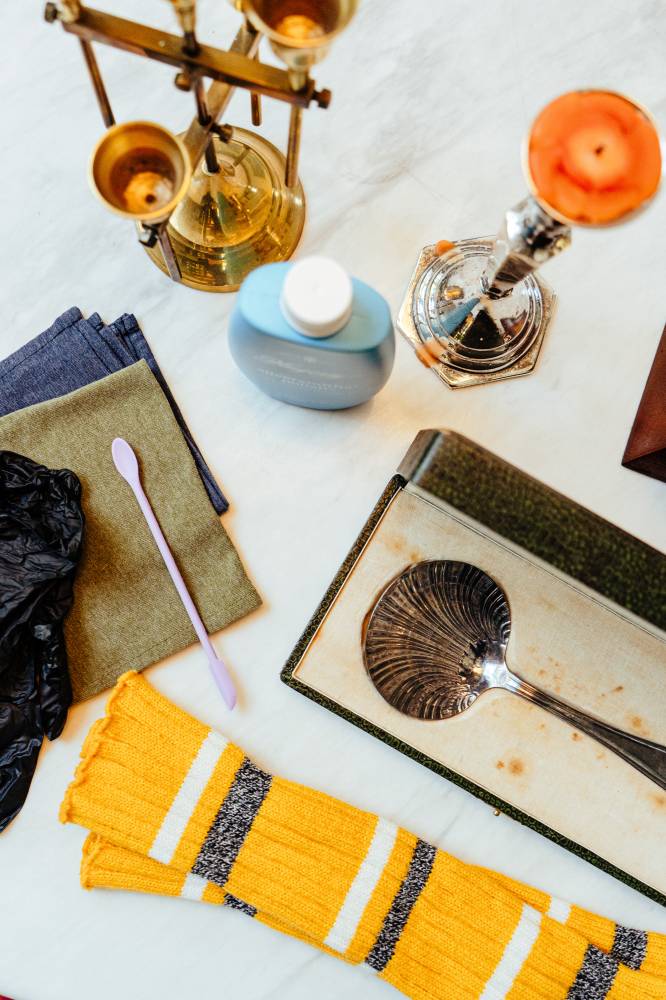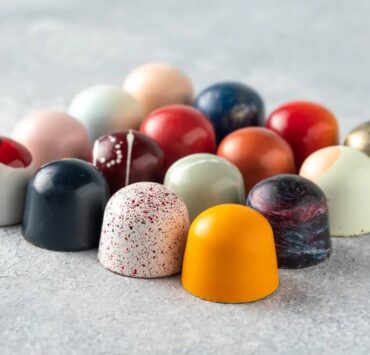A polished life

The flame goes out, but its glow lingers. Candlelight has a way of slowing time. A dinner becomes an occasion, while a Tuesday feels like the weekend. Candleholders and candelabras—whether heirloom silver, an estate-sale find or the honeyed warmth of brass—become frames for this light. They don’t just hold candles. They shape the vibe, ease the atmosphere, add drama, and turn the ordinary into something magical.
But beauty is not self-sustaining. Wax drips, tarnish creeps in, brass loses its gleam. Left alone, what once sparkled turns dull. The secret to lasting radiance lies not in endless replacements but in patience and loving care. This, in turn, becomes a quiet, almost meditative ritual that restores not just objects but us as well.
Think of it as a form of meditation. When you polish silver or wipe down brass, you are not merely maintaining things. You are reminding yourself that the details of daily life matter. A polished surface reflects effort and care.
Preparing the mood
Before you begin, think of it like a ritual: intentional, almost ceremonial. Like an audiophile warming up his amps before playing a song, a coffee lover calibrates a Rocket espresso machine just before enjoying the first shot of the day, or the quiet satisfaction of cleaning makeup brushes.
The pleasure is in the preparation. It sets the mood, and makes the ritual itself feel as rewarding as the result.
Create the right setting
*A flat table where everything can be laid out neatly.
*Good light matters. Daylight is the best light.
*A comfortable chair. Good posture makes the work less of a chore, and more of a ritual.
*Music. Play something that helps you slip into a slower rhythm.
*Everything you need. Polishing tools in a toolbox.
*The piece before you. A candelabra, candlesticks, or silverware—waiting to be renewed.
This way, even the smallest act of polishing becomes a necessity of a well-kept home.
The ritual of wax removal
Candles lend glow, but they leave behind traces of their passing. Drips of hardened wax clinging to every curve. To clear them away:
1. Harden the wax: Slip the candelabra into the freezer for a few hours. The cold contracts the wax, making it brittle and far easier to remove.
2. Scrape and lift: Once frozen, gently chip away at the wax. A plastic scraper, spatula, or even a toothpick works for broad and narrow spaces alike. For stubborn corners, a butter knife is acceptable. Just handle it delicately, as if you were trimming a pastry edge.
3. Wash and refresh: Mix a few drops of mild dishwashing liquid into warm water. With a soft cotton cloth, wipe down the surface. Intricate crevices respond well to the touch of a soft-bristled toothbrush.
4. Rinse and dry: Rinse with clean water, then immediately dry with a dish towel. This instant, gleaming reward is one of life’s small satisfactions. Proof that patience pays off.

On polishing silver
Silver has its own temperament. It darkens with time, tarnishes when left in drawers, and reacts swiftly to foods and detergents. Yet, it is precisely this sensitivity that makes it special. Silver demands care, but rewards it with a glow that no stainless steel can mimic.
Daily care
For fine silverware, the mantra is gentle handling. Wash immediately after use, especially after contact with acidic food. A soft sponge, warm water, and mild dishwashing liquid are all you need.
It is a balance between convenience and preservation. Respect the silver and it will serve you for generations.
Occasional polishing
For deeper shine or stubborn tarnish, I like to use Hagerty Silversmith Polish or Twinkle. Apply gently with an old cotton fabric (repurposed cotton shirts, like my husband’s old shirts, make the best polishing rags. They are soft, absorbent and already broken in), lightly dampened with warm water. Rinse, then buff with a soft cloth.
The process is unhurried, almost ceremonial. Avoid abrasives or bleach. Chemical polishes can be harsh. Nitrile gloves keep your hands protected while you work. Harshness has no place in this ritual.
Why it matters
Polishing is really about the object, and it’s also about us. It is about slowing down long enough to notice the details, to keep what we already have in good shape, and afterwards, to admire its beauty. A polished life is not about perfection. It is about care, presence, and the quiet pleasure of tending to the things that make daily life feel just a bit more special.
The glow of a candle in a well-polished holder, the gleam of silver cutlery against a linen napkin… these are not frivolities. They are affirmations of care. They tell your guests and yourself that details are not lost in the blur of modern living. That beauty lingers when we tend to it—quietly and consistently.
Polishing, then, becomes less about objects and more about mindset. A pause in the rush of errands and deadlines. A reminder that time can be slowed with deliberate acts. And in the shine of silver, we glimpse a life that is, quite literally, polished.
A gentle conclusion
Everyday rituals—whether lighting a candle, polishing a spoon or buffing brass—are not just chores. They are invitations to live with elegance. They allow us to hold on to traditions while creating new memories.
So the next time wax drips or tarnish sets in, don’t see it as a nuisance. See it as a quiet opportunity to put on music, take a breath, and let the simple act of restoration begin. Bring sparkle not only to your silver but to your day.
Because beauty, after all, does not merely appear. It lingers when we tend to it with grace.
Tips for a polished life
*Repurpose: Old cotton shirts make excellent polishing cloths. Soft, lint-free, and sustainable.
*Protect: Slip on nitrile gloves when using chemical polish. Your skin will thank you later.
*Timing: A quick wipe after each use prevents tarnish from building up. Little habits go a long way.
*Storage: Keep silver in soft pouches or lined drawers to slow tarnishing.
*Mindset: Think of polishing less as a chore, and more as a reset. Like brewing good coffee, warming up an amp, or lighting a candle.





















